10 Sustainable Ways To Support Lathyrus Plants From The National Sweet Pea Society


Elizabeth is a Permaculture Garden Designer, Sustainability Consultant and Professional Writer, working as an advocate for positive change. She graduated from the University of St. Andrews with an MA in English and Philosophy and obtained a Diploma in Applied Permaculture Design from the Permaculture Association.
Reviewed By PETER LICKORISH

Peter is a Horticulture Lecturer and self-employed Horticulturist, with a passion for diverse areas of the industry - from garden design to the science behind plant growth and propagation. He has completed the Royal Horticultural Society’s Master of Horticulture (MHort) Award and lectures on RHS courses at Bedford College.
Contributions From CAROLE TATE

Carole is the General Secretary of The National Sweet Pea Society, based in Buckinghamshire. Carole has created displays for the RHS as well as local shows, where she has won several accolades.

The founder of Studio Ikram, Humaira has worked as a professional Garden Designer for over 10 years. She also runs a Garden Design course at KLC School of Design and is a Garden Adviser to the RHS. Humaira regularly contributes to BBC Gardener’s Question Time and has also featured on flower shows across Netflix and the BBC.
IN THIS GUIDE
LATHYRUS GUIDES
Sowing
Support
Sweet peas are a wonderful option for new and old gardeners alike.
They are relatively easy to grow and, as nitrogen fixers, can be useful in a vegetable garden as well as in ornamental schemes.
If you decide to grow sweet peas in your garden, no matter where you choose to grow them, one of the questions you will have to answer is how you will provide these vining plants with support.
“Ensure there is plenty of room for the roots to grow, do not plant too close together and give them enough support to grow up,” advises Carole Tate, Committee Member at the National Sweet Pea Society.
“They are annuals and put on a lot of growth in the year.”
Fortunately, sweet pea support ideas are numerous and varied.
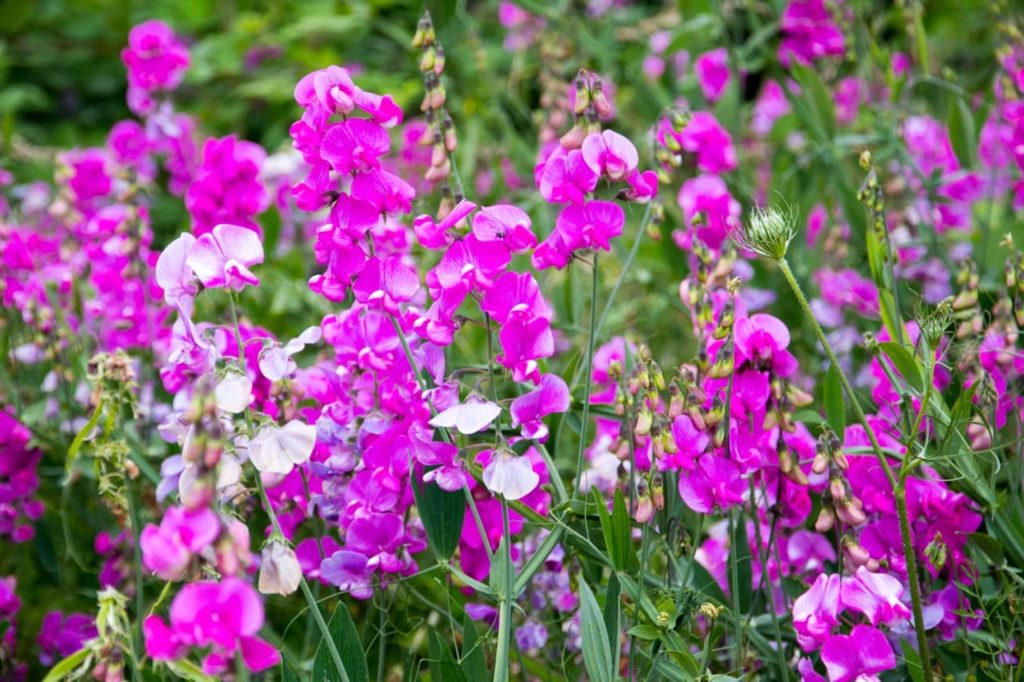
The supports do not need to be as strong and sturdy as they do for some other climbers that you might grow in your garden, as the plants are not too large, heavy or vigorous.
There are many different support options that you might purchase for your sweet peas, but the most sustainable and eco-friendly options to consider are those that you can make yourself, from natural or reclaimed materials.
Below is a list of just ten of the many sustainable support ideas for sweet peas that you might like to consider.
1) Wigwam – Bamboo Canes
The first and most common option is to create a wigwam for sweet peas to climb up.
To create a wigwam structure, many people will use a number of bamboo canes.
The canes can be threaded together with natural twine to which the sweet peas can cling.
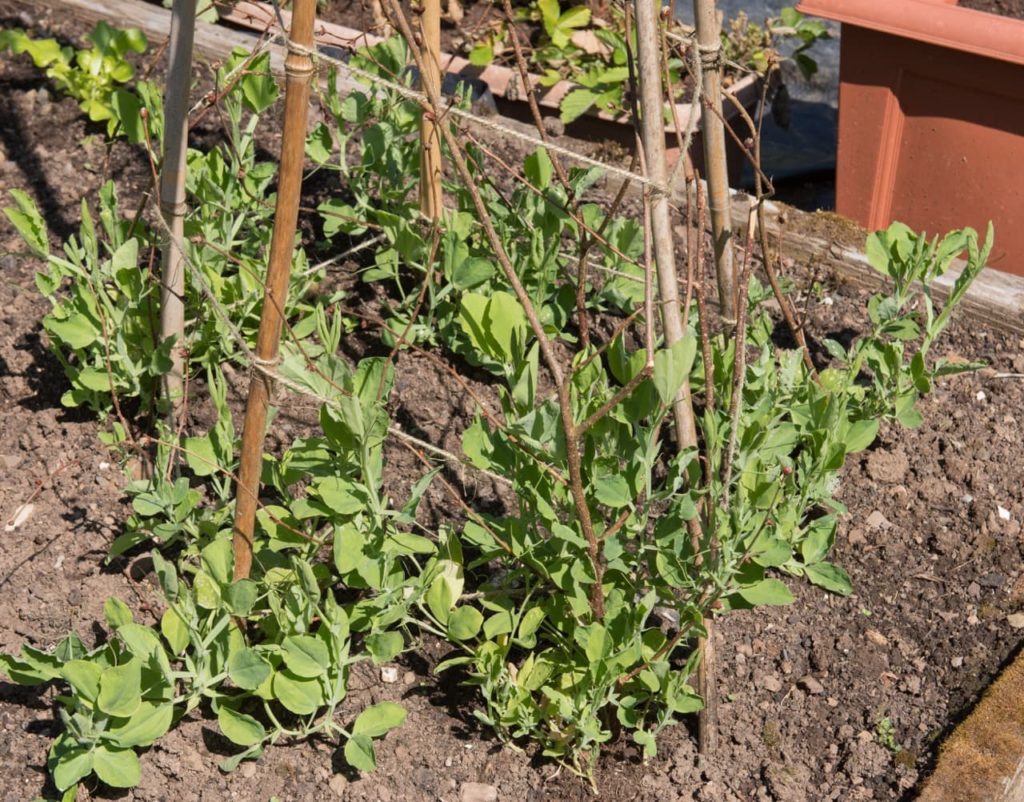
As long as you create a cane wigwam of the right size, the structure itself can be entirely covered by the stems and flowers of your sweet peas and become an attractive feature in your garden.
Bamboo can be a sustainable material, especially if you have your own growing in your garden to harvest.
However, before you rush out and buy bamboo canes, remember that there are other natural materials that you might already have on hand.
2) Wigwam – Natural Branches
Any natural branches pruned from trees or shrubs in your garden might also potentially be used to create a simple wigwam structure, as long as they are long and relatively straight.
Hazel and willow are woods that are commonly used, since these can be coppiced or pollarded for a supply of thin, long and straight stems.
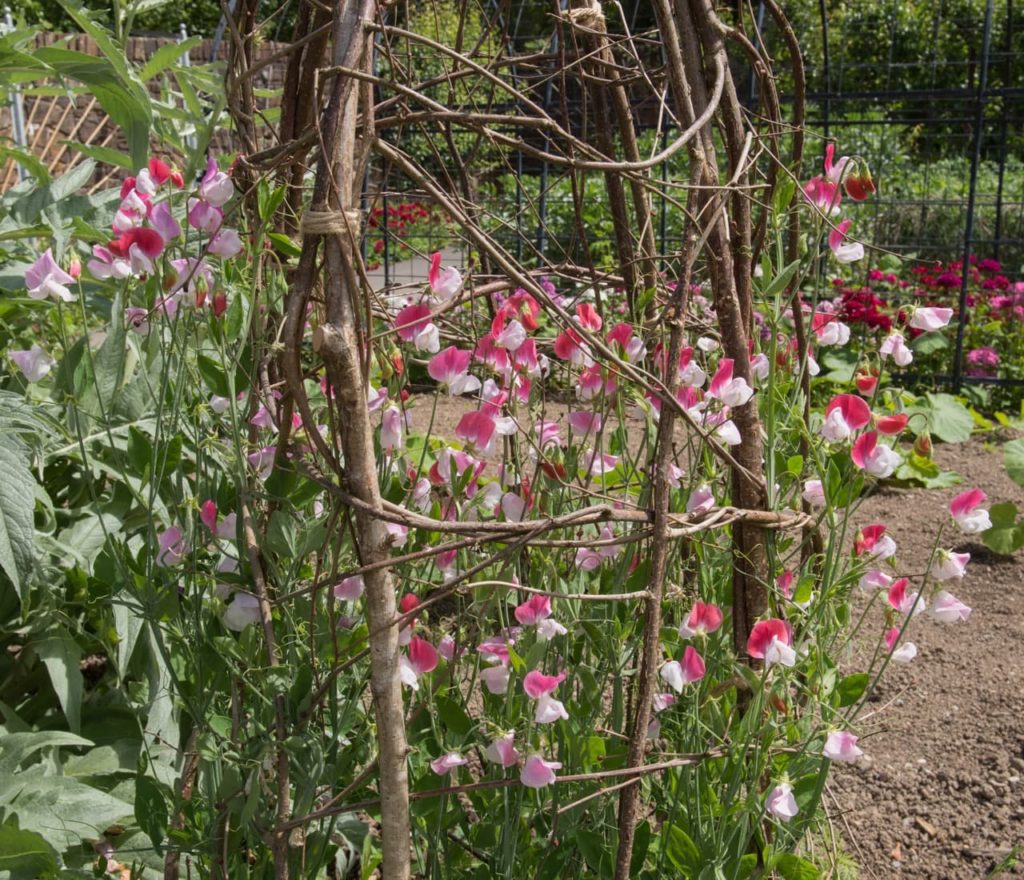
You might also be able to use other branches that you happen to have access to in your garden.
As above, these branches can be held together with a natural string or twine, but you might also go one step further and wind thin, pliable branches between the uprights to create a woven structure for sweet peas to cling to as they grow.
3) Vertical Canes Planted In Rows
Wigwam-style supports can be a great choice for small spaces, but sometimes you might wish to incorporate sweet peas into your garden design in a way that allows them to sit alongside rows of common vegetable crops.
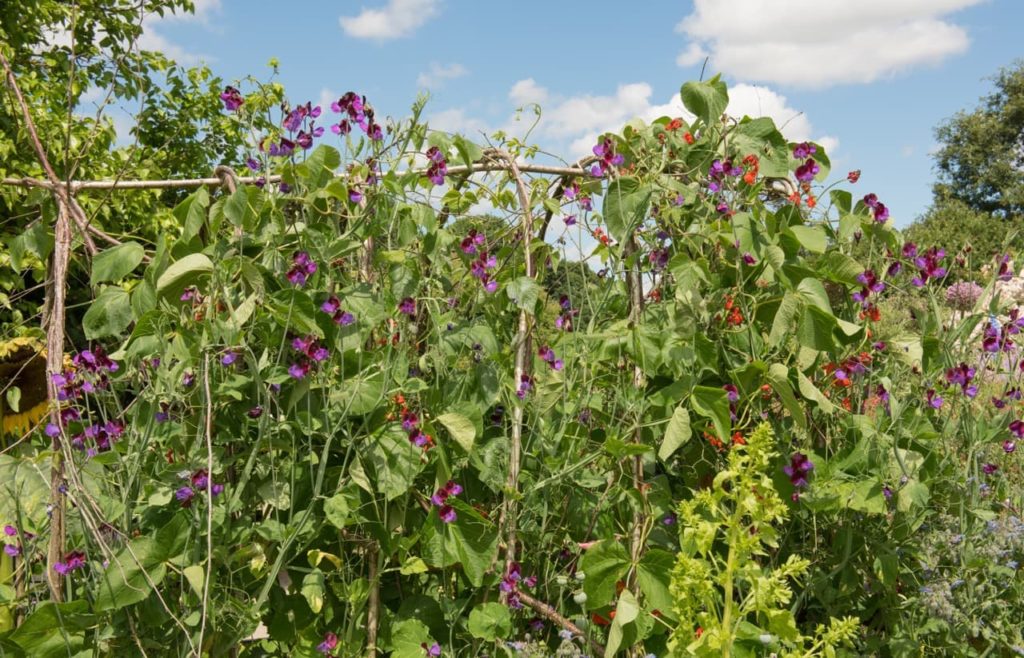
When growing sweet peas in a row, you might simply create a row of canes or branches by inserting them into the ground.
You might tie in sweet peas to these support stakes as they grow or string twine between these canes for the plants to cling onto.
“I’ve got perennial sweet peas in my garden that don’t smell as good, but you can cut them and keep them and they come back every year, making them so easy to grow,” shares Humaira Ikram, a Garden Designer.
Sweet peas growing in this way, as Humaira suggests, would be especially easy to cut back every year.
4) Branching Twig Supports
Another idea that I enjoy for a more naturalistic feel is to use a series of twigs with many branches pushed into the soil or growing medium.
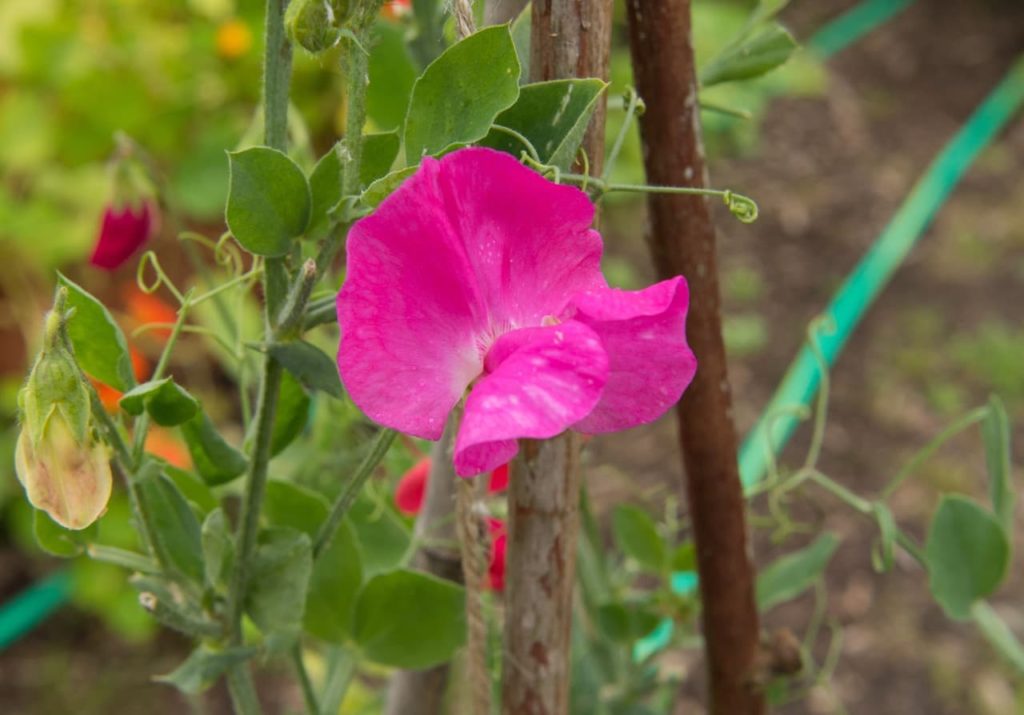
The sweet peas can cling to the different twigs at different heights as they grow.
This is a method of support commonly used for garden peas that we eat, but it can also work very effectively for sweet peas, giving a natural and rustic feel when these flowers are incorporated into the garden.
5) Arch Trellis
Large or small, arch-type trellis supports are also a great choice for sweet peas and can look amazing when the flowers are in full bloom.
Of course, if the arch is especially tall, the sweet peas will not likely grow over the entire arch.
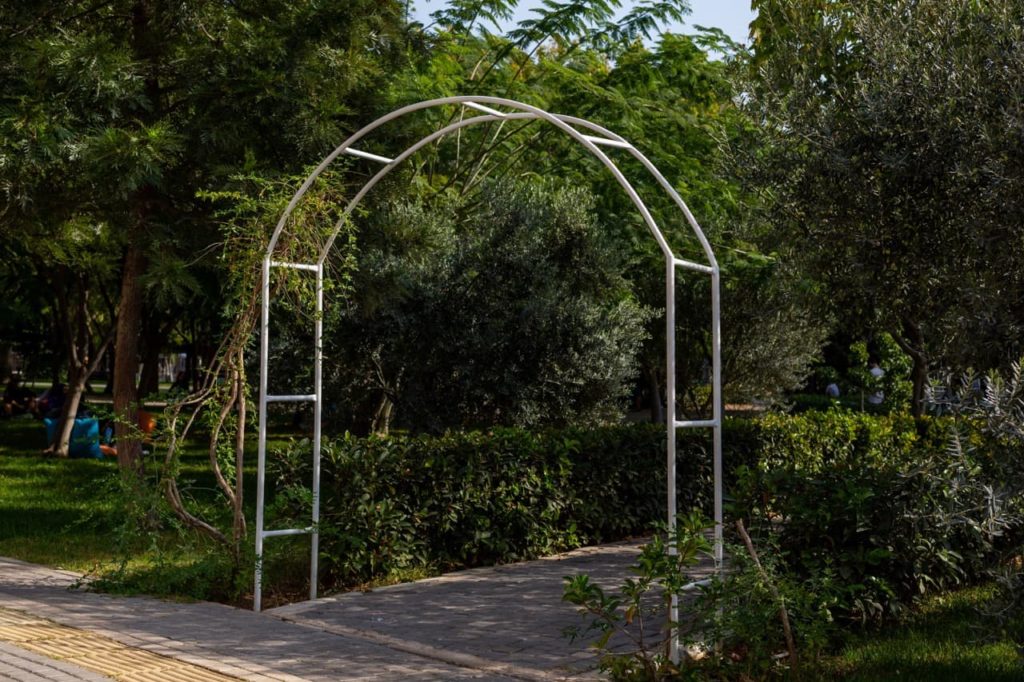
However, when combined with other flowering climbers like roses or clematis, you could create impressive displays with blooms over a large portion of the year if you choose your plants carefully.
Creating an arch trellis that you can walk through will allow you to surround yourself with the sweet peas’ delightful scent.
The arch might cover a pathway or be placed over the top of a seating area or other outdoor recreational space.
6) Obelisk Trellis
If space is limited, obelisk-style support can work well in gardens of a range of different styles.
Again, you do not necessarily have to go and buy one.
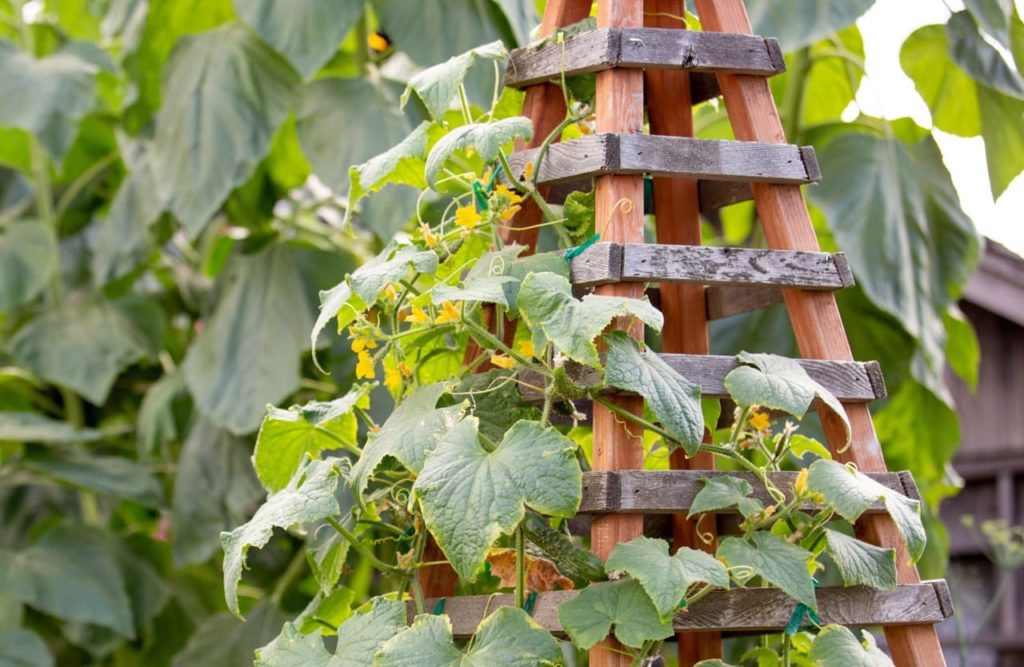
These simple structures can be relatively easy and straightforward to make.
You can make your own obelisk support with reclaimed wood and some very basic woodworking or joinery skills.
By making your own, you can do the right thing and cut your consumption and your carbon footprint.
7) A-Frame Support
Whether you use bamboo canes, natural branches, reclaimed wood or other materials, A-framed trellis structures are also a popular choice when growing climbing plants, including sweet peas.
Remember, sweet peas can and should be grown on trellis supports not only on their own, but alongside a number of other climbing plants.

You might use them alongside ornamental edibles for a display that is not only attractive, but also provides you with an edible yield.
Of course, sweet peas themselves cannot be eaten, but you might grow them alongside runner beans, which can.
Just make sure that your sweet peas get enough light by placing them on the southern side of the tall and vigorous beans.
8) String & Post Trellis
No matter what size or shade of structure you create to support your sweet peas, creating a simple framework means that you can use taut string between these as support for your sweet peas.

Remember to use a natural twine, which, if you are feeling adventurous and have the time, you can even make yourself using nettles or other fibre plants from your garden.
9) Chicken Wire Supports
The upright supports in a structure designed for sweet pea vines might also have chicken wire or another mesh placed between them, providing plenty of places to which the vines can cling.
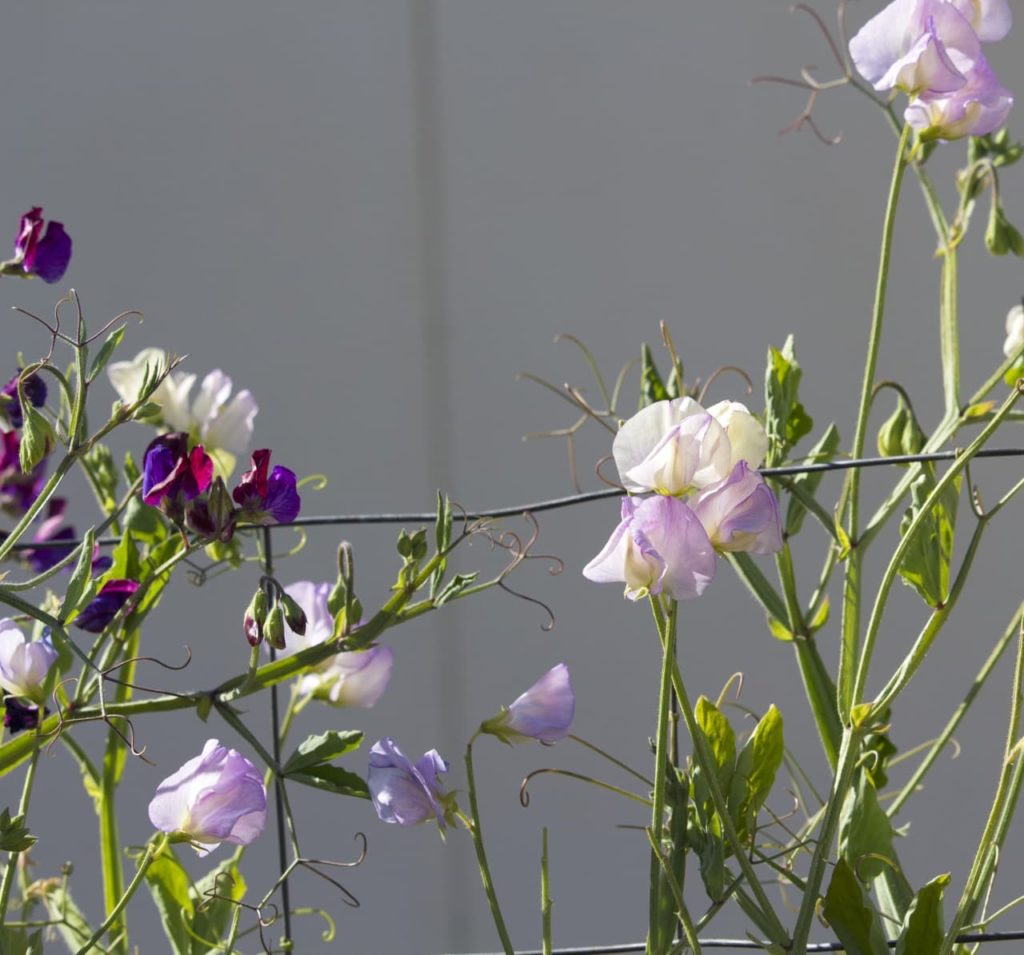
Using pieces of reclaimed wire or mesh can be ideal, and, again, help you make sure that you do not need to buy anything new.
10) Other Upcycled Materials
There are plenty of other cool ways to upcycle old materials and items to make support structures for the sweet peas in your garden.
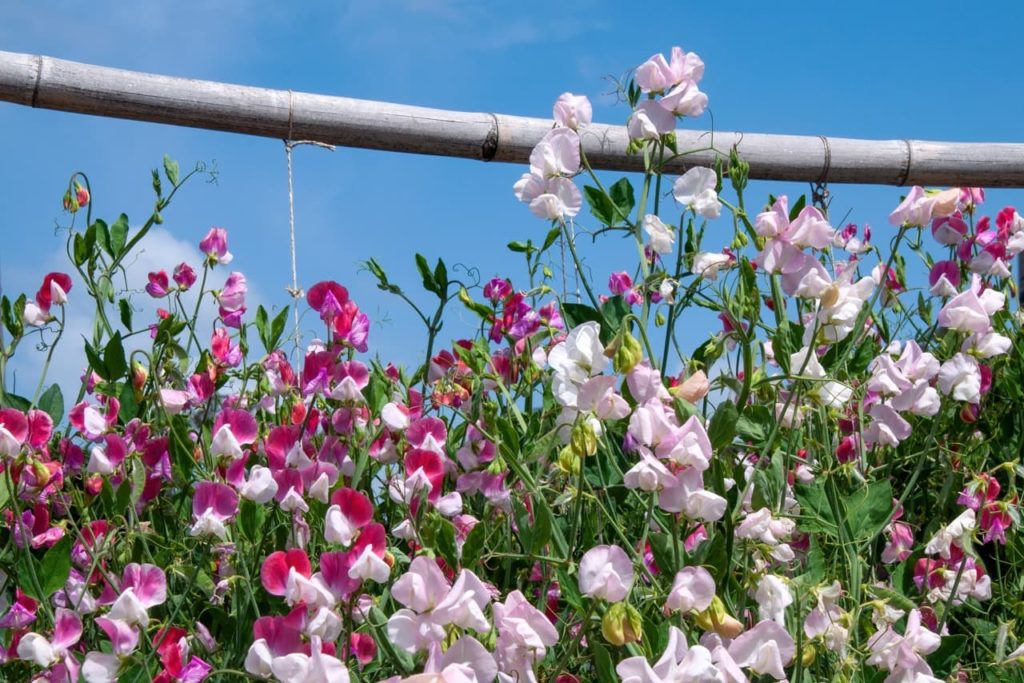
One example involves using old bicycle wheel rims and spokes to create a support structure for a small garden area or container garden.
Use your imagination and look around you, and you may find plenty of other things that you can upcycle and repurpose to form support for sweet peas and other climbing plants.
“Regardless of your chosen support, aim for 20-30cm between plants,” adds Horticultural Consultant Peter Lickorish.
“I find it easiest to have one plant per cane, unless you have sown your seeds in small groups and prising them apart would cause too much disturbance. Remember, sweet peas hate root disturbance.”
